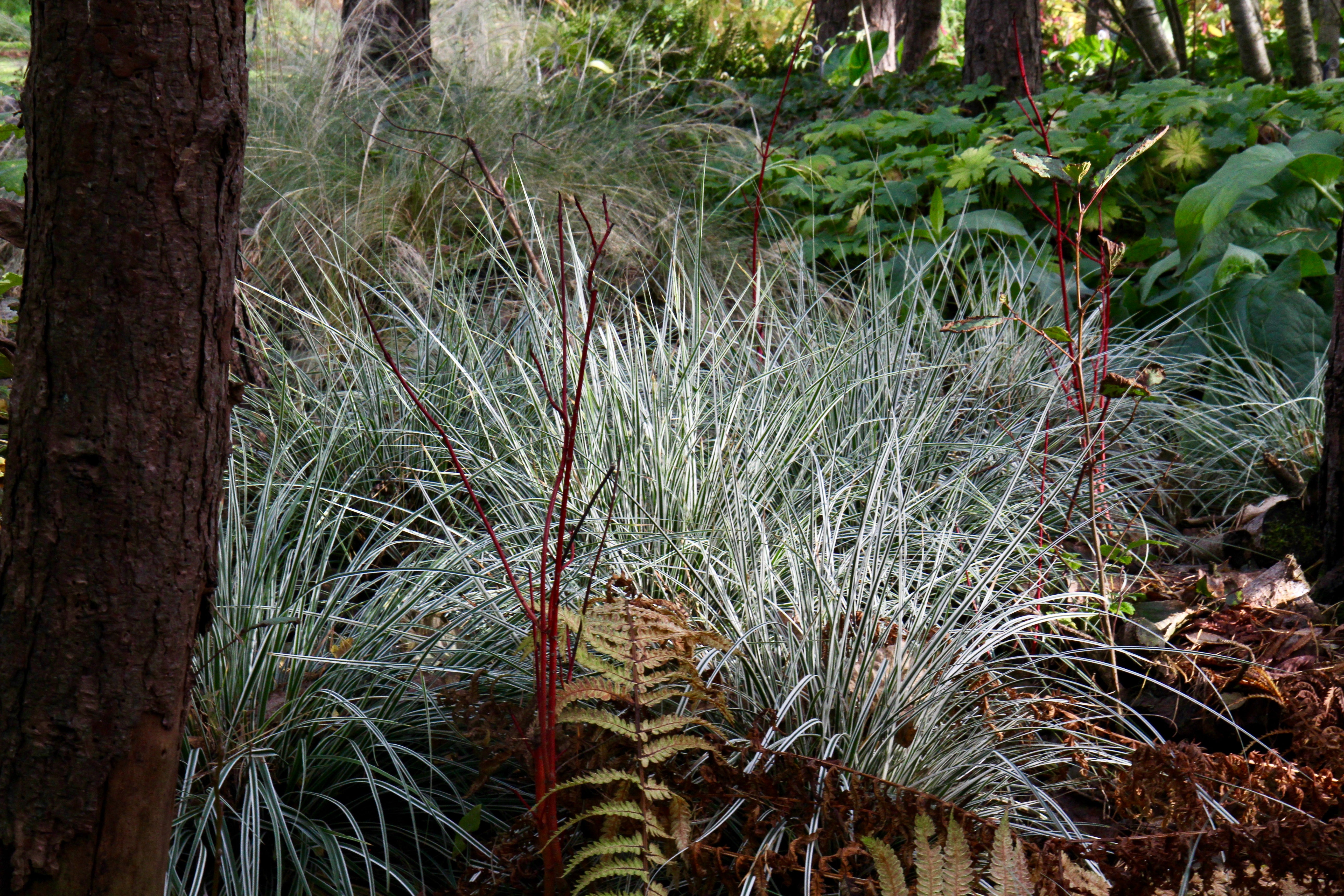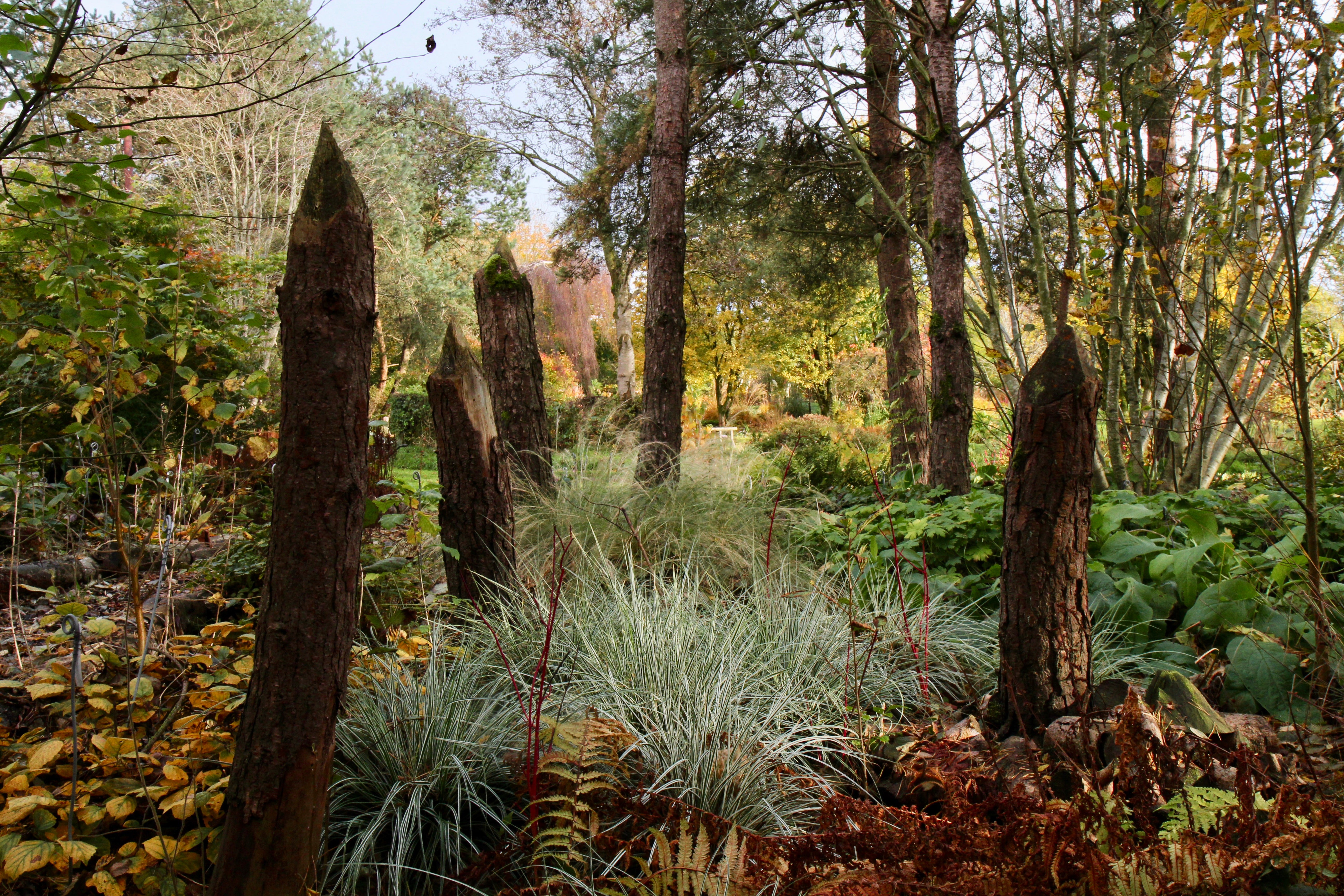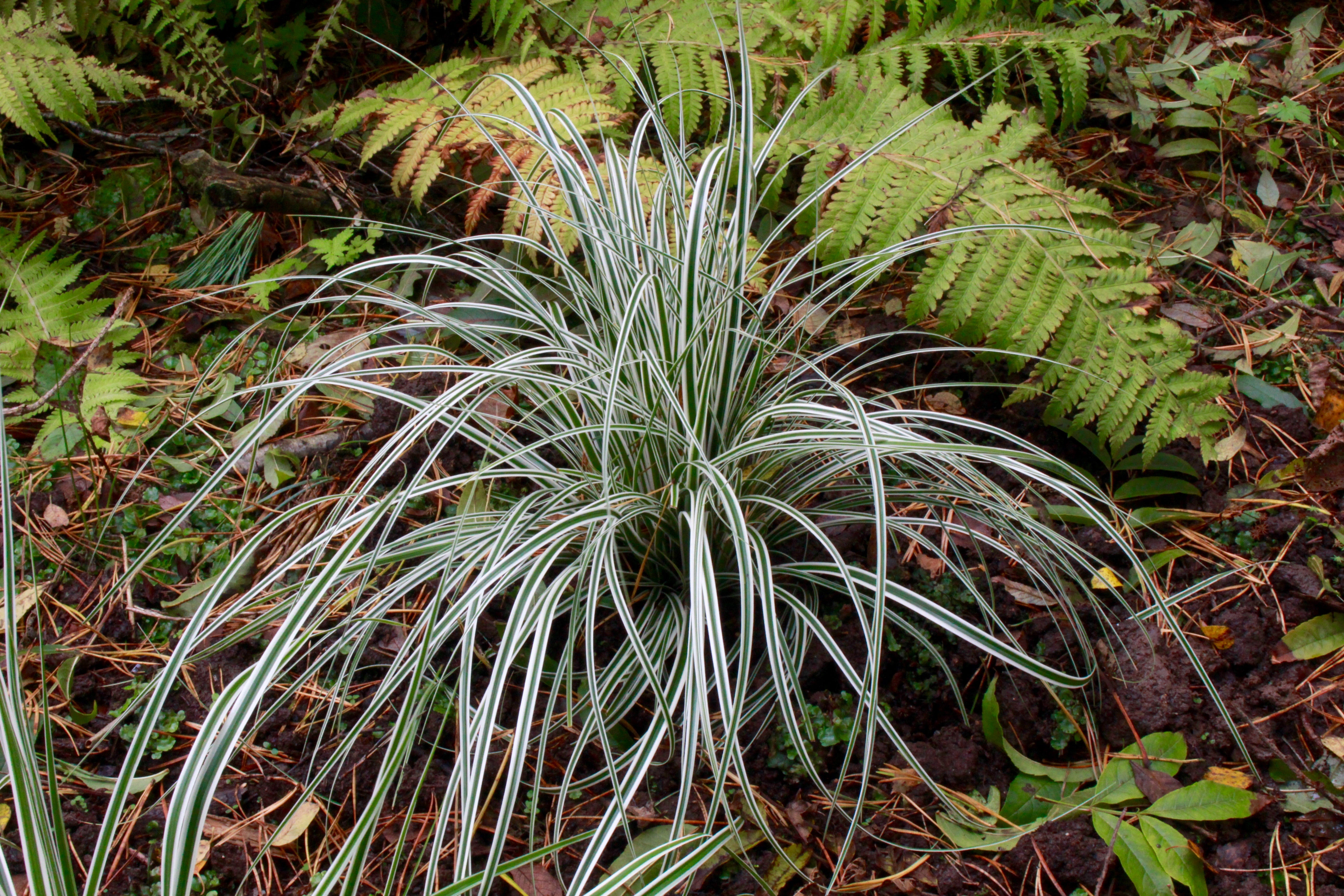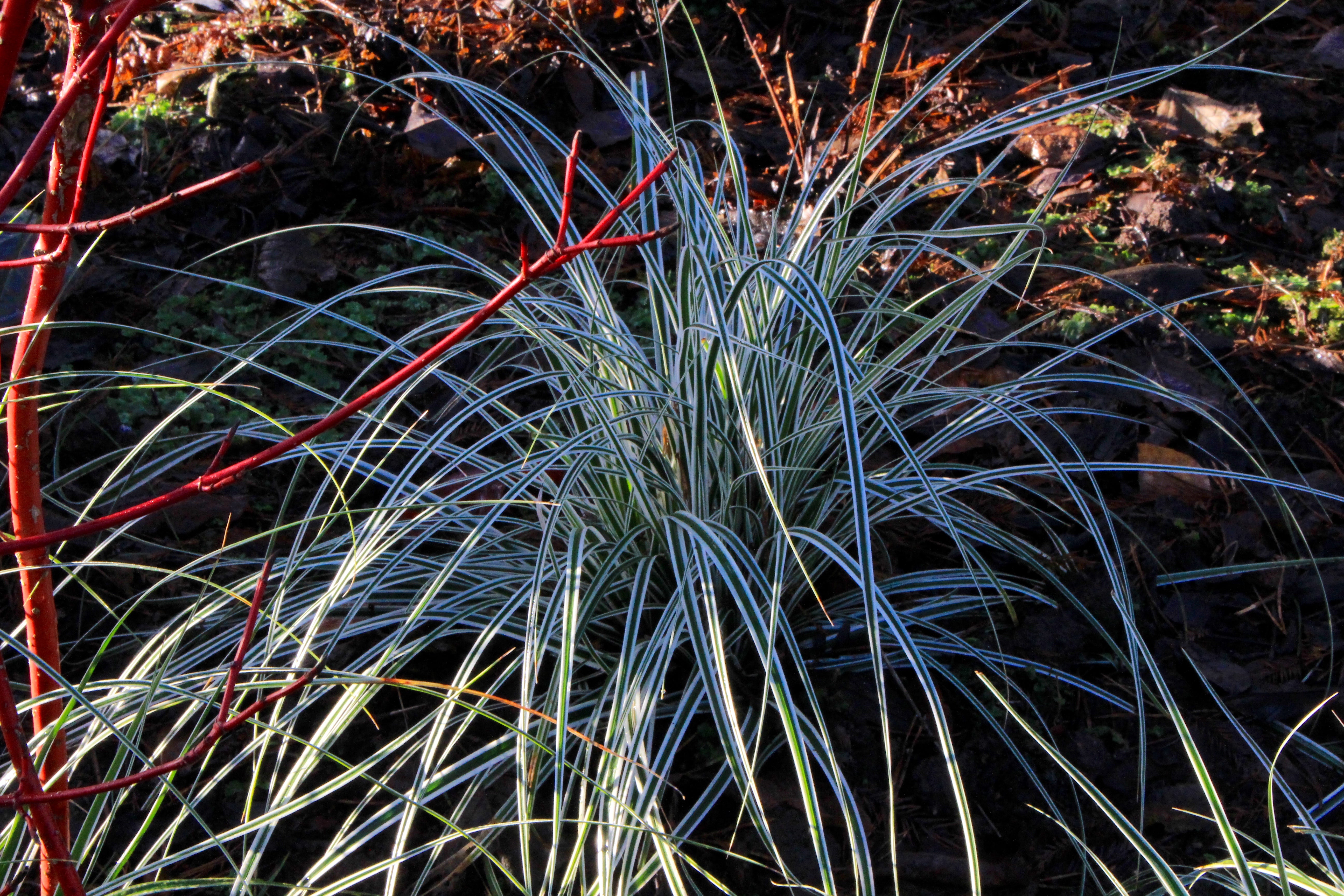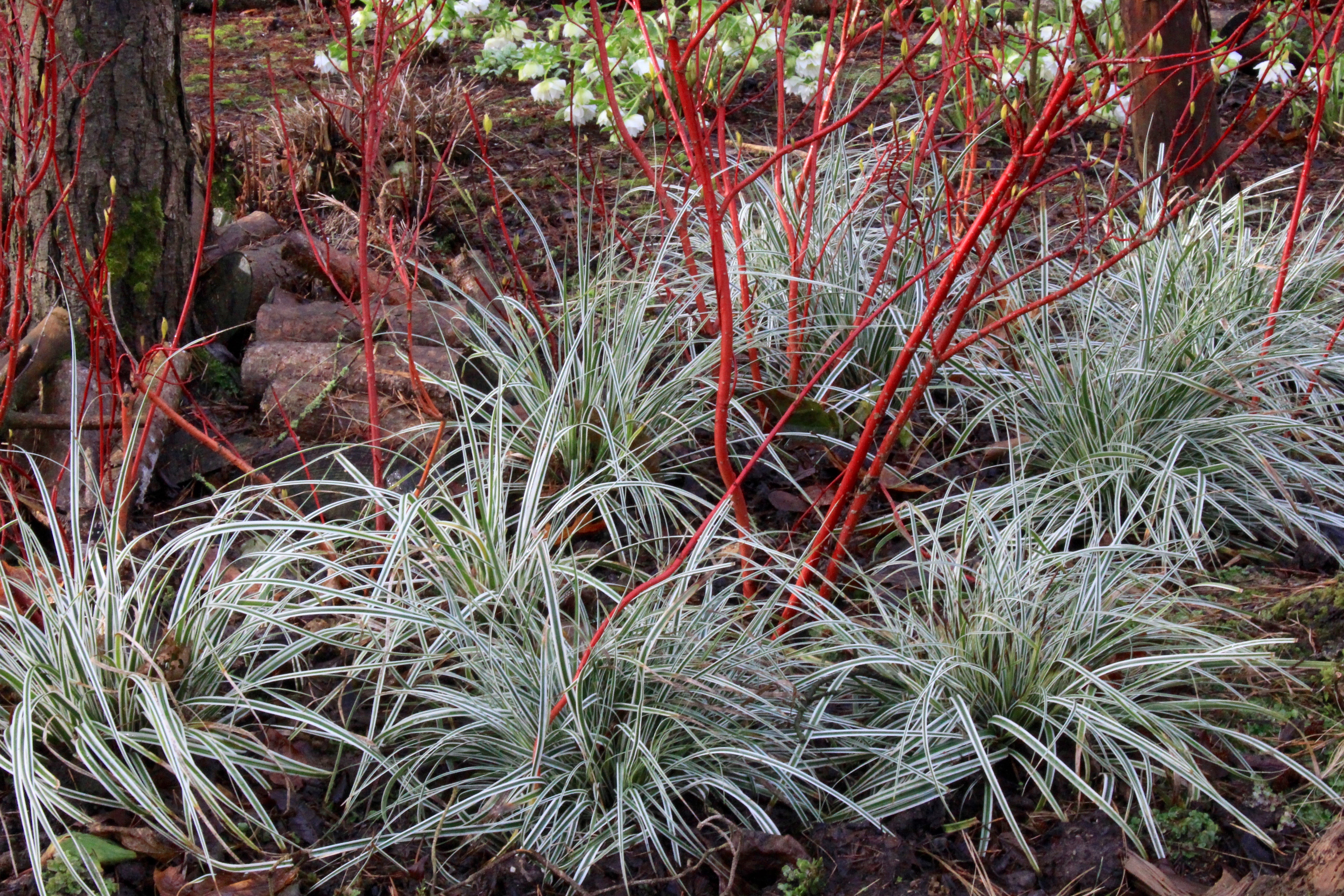Carex oshimensis Everest = 'Fiwhite' (v)
Approx. 0.5 litre pot
About this cultivar:
Carex oshimensis Everest = 'Fiwhite' (v) is a mound-forming evergreen plant with very tidy silvery-white margined dark green leaves. The flowers in late spring and summer are not showy. This plant, like most smaller Carex, is a versatile one. Try as a container plant, as a border plant, as large scale groundcover, or dotted around woodland. It can even be used at the edge of the water garden (but dislikes complete submersion).
This cultivar is a mutation of the popular Carex oshimensis 'Evergold' (a plant once called Carex morrowii 'Aurea-variegata') which has leaves with green margins on a central stripe of cream white. It was discovered by by Pat Fitzgerald of Kilkenny, Ireland. Has the Royal Horticultural Society Award of Garden Merit.
- Position: Full sun, partial shade
- Soil: Almost any soil, grows well in Ballyrobert
- Flowers: April, May
- Other features: Royal Horticultural Society Award of Garden Merit (RHS AGM), Grows well in Ballyrobert
- Hardiness: H7 - Hardy in the severest European continental climates (< -20°C), Fully hardy - grows well in Ballyrobert!
- Habit: Tufted, Clump forming
- Foliage: Evergreen
- Height: 15 - 45 cm (0.5 - 1.5 ft)
- Spread: 15 - 45 cm (0.5 - 1.5 ft)
- Time to full growth: 2 to 5 years
- Plant type: Herbaceous Perennial
- Colour: White, green, yellow
-
Goes well with: Phlox, Arum and Helleborus. Or Hosta, Begonia and Tricyrtis.
About this genus:
Carex was established as a genus by Carl Linnaeus in his work Species Plantarum in 1753. It is a vast genus of almost 2,000 species of grassy looking plants in the family Cyperaceae, commonly known as sedges. Other members of the Cyperaceae family are also called sedges, however those of genus Carex may be called "true" sedges, and it is the most species-rich genus in the family. The genus is so vast that the study of Carex has its own name: caricology. There are some great stories about this genus, for instance: a mix of dried specimens of Carex have a history of being used as thermal insulation in footwear (such as skaller used by Sami people). During the first human expedition to the South Pole in 1911, mixes were used!
Carex foliage colour varies from green, to blue, to gold/orange or variegated. The genus generally forms arching mounds from a few inches to more than 2 feet tall. Carex looks like a grass, is often called a grass, but it is NOT a grass! It is a sedge! Solid triangular stems distinguish sedges, including the species herein, from grasses which have round and usually hollow stems. In the wild they are often found in wetlands, hence it is unsurprising they prefer moist soil and part shade. However, like most plants in our garden, they grow in most conditions that are not too extreme: they are tough!
Sedges are used mostly as evergreen shade "ornamental grasses" that add dramatic form and blend texturally with most plants. But don't just think of them as "Grasses for shade" they also compliment Liriope and Ophiopogon. Because they like moisture, at Ballyrobert, we often plant them in and around Astilbe, Hosta and Primula where their colourful foliage combines with the flowers of the other plants! (I love red Astilbe with yellow Carex)

